Abstract
Amplification of endogenous cholinergic activity—produced by the intravenous injection of edrophonium, an acetylcholinesterase inhibitor which does not enter the central nervous system, into normal subjects—resulted in significant and briefly sustained increments in the plasma concentrations of norepinephrine (153±15−234±29 pg/ml, P < 0.01) and epinephrine (16±3−34±5 pg/ml, P < 0.01) measured with a single-isotope derivative method. These increments were not attributable to reflex responses to hemodynamic changes and similar increments in plasma norepinephrine occurred in adrenalectomized (epinephrine deficient) patients. Thus, cholinergic activation results in direct stimulation of sympathetic postganglionic neurons, with augmented norepinephrine release, and of the adrenal medullae, with augmented epinephrine release, in man. Four diabetic patients with hypoadrenergic postural hypotension exhibited blunted sympathetic postganglionic neural responses, and normal adrenomedullary responses, to cholinergic stimulation (and to standing) indicative of the presence of a sympathetic postganglionic axonal lesion in diabetic adrenergic neuropathy. Nondiabetic patients with hypoadrenergic postural hypotension due to documented or probable central nervous system lesions exhibited normal responses to cholinergic stimulation produced in this fashion demonstrating the presence of intact sympathetic postganglionic neurons and adrenal medullae in these patients and providing further support for the conceptual soundness of this approach to the study of human adrenergic physiology and pathophysiology.
Full text
PDF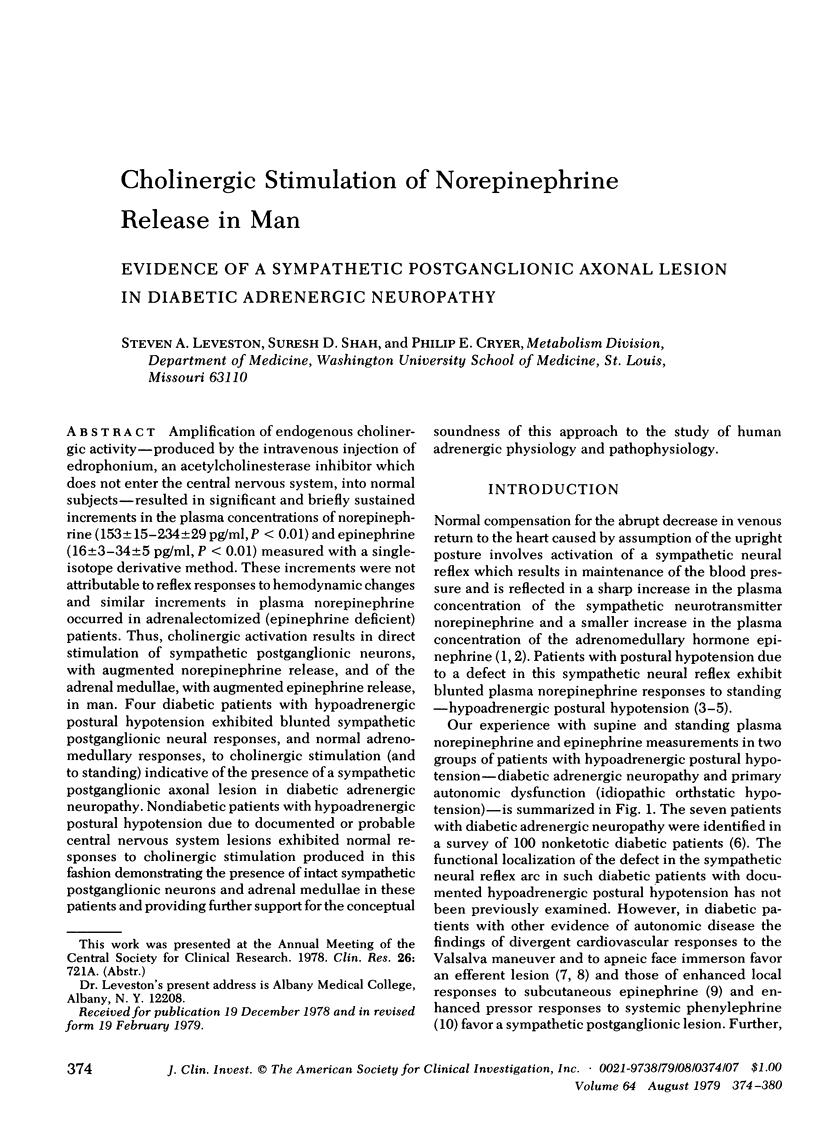
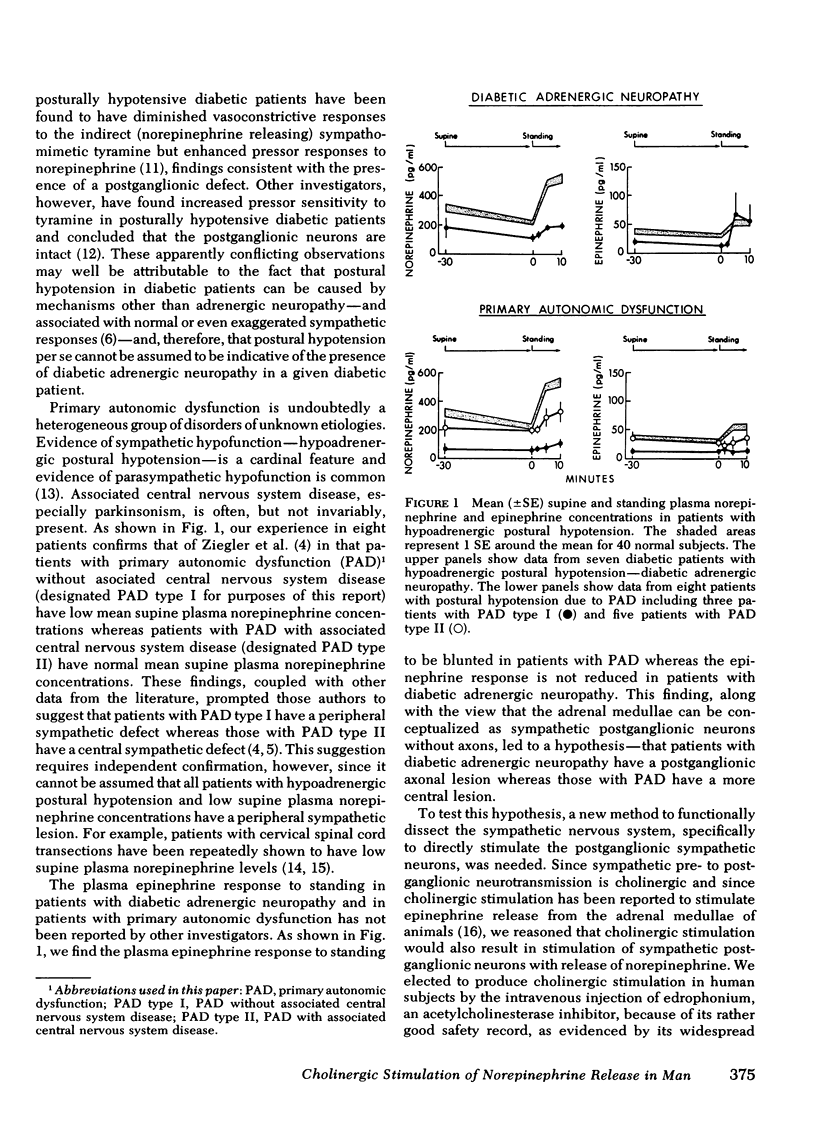
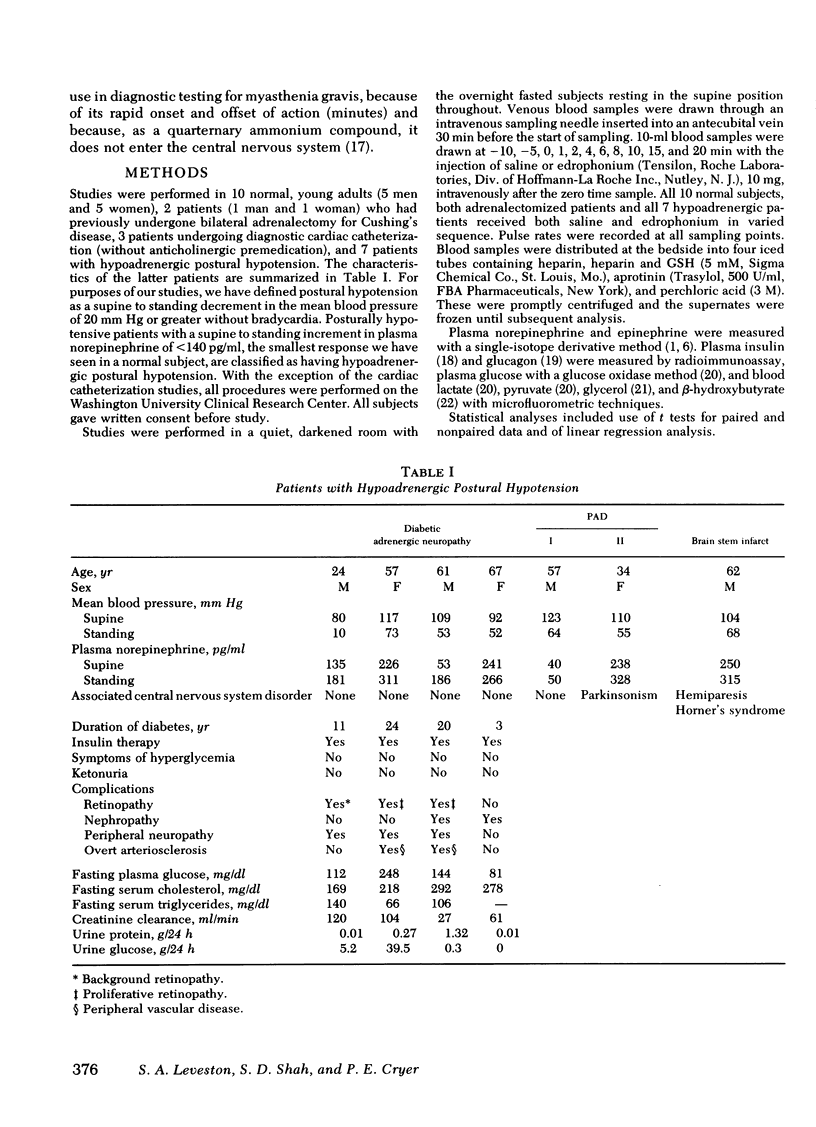
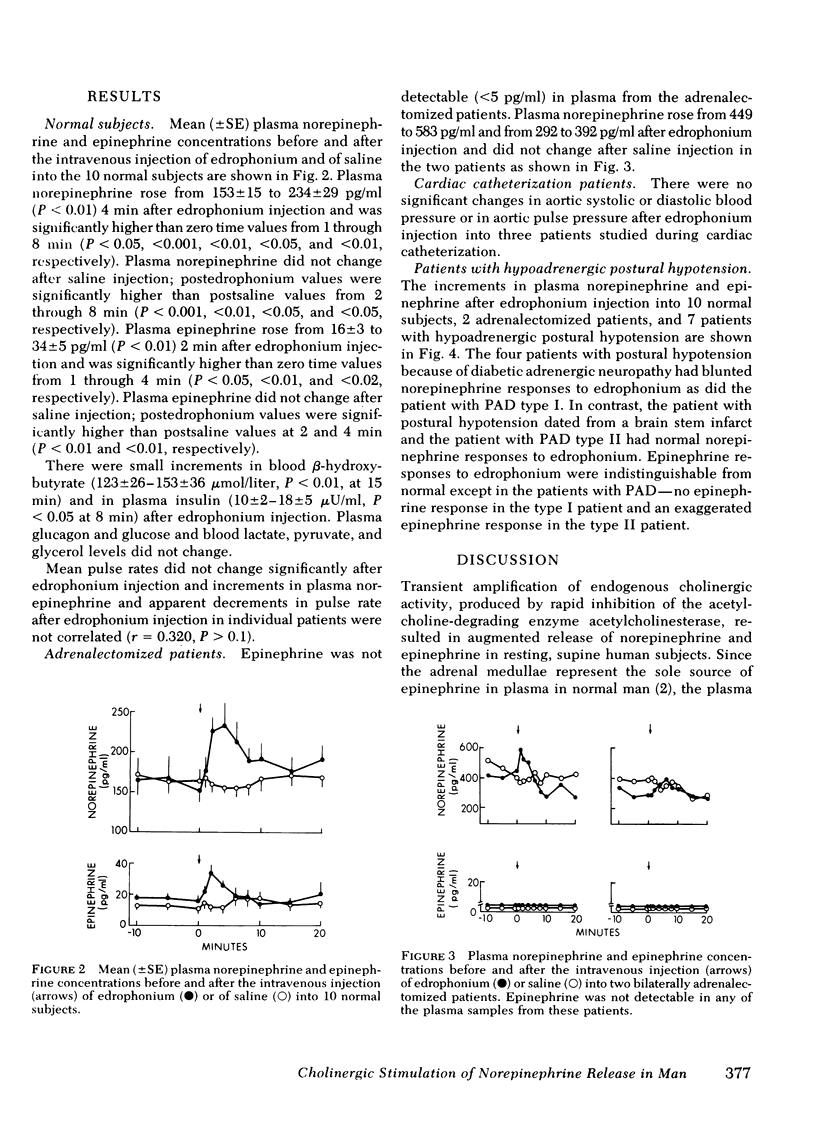
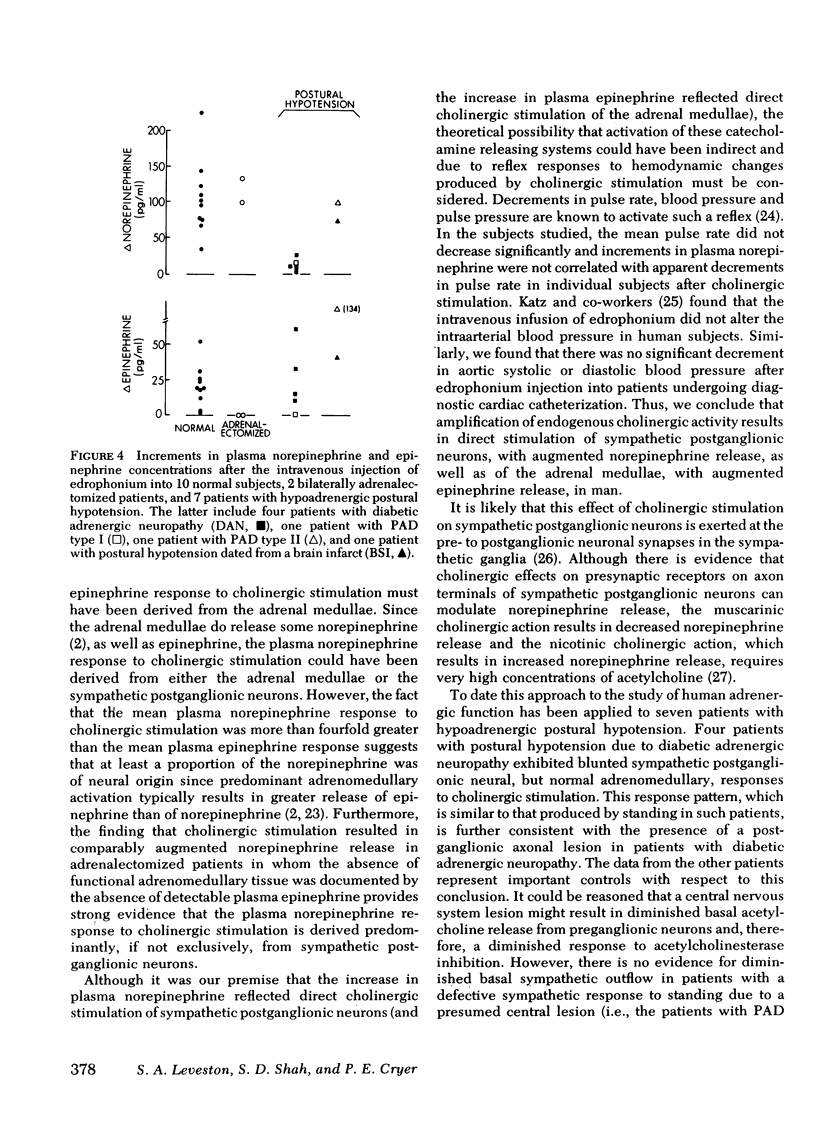
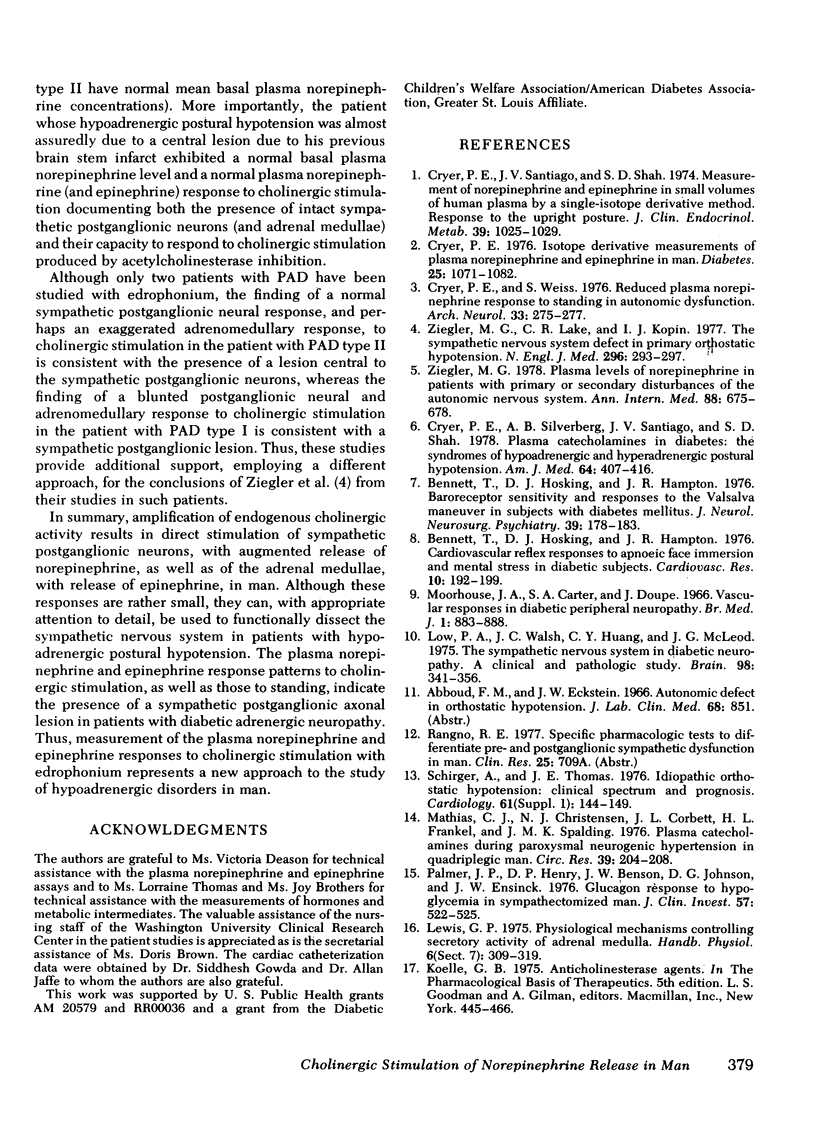
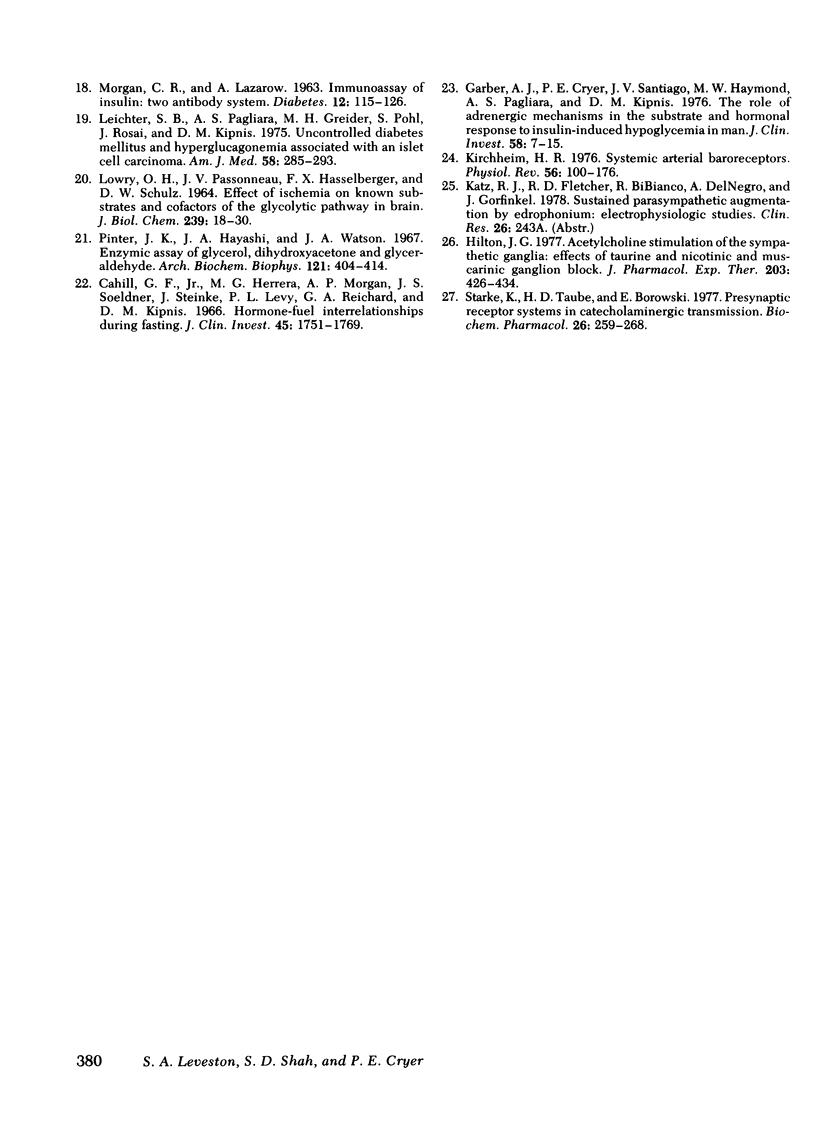
Selected References
These references are in PubMed. This may not be the complete list of references from this article.
- Bennett T., Hosking D. J., Hampton J. R. Baroreflex sensitivity and responses to the Valsalva manoeuvre in subjects with diabetes mellitus. J Neurol Neurosurg Psychiatry. 1976 Feb;39(2):178–183. doi: 10.1136/jnnp.39.2.178. [DOI] [PMC free article] [PubMed] [Google Scholar]
- Bennett T., Hosking D. J., Hampton J. R. Cardiovascular reflex responses to apnoeic face immersion and mental stress in diabetic subjects. Cardiovasc Res. 1976 Mar;10(2):192–199. doi: 10.1093/cvr/10.2.192. [DOI] [PubMed] [Google Scholar]
- Cahill G. F., Jr, Herrera M. G., Morgan A. P., Soeldner J. S., Steinke J., Levy P. L., Reichard G. A., Jr, Kipnis D. M. Hormone-fuel interrelationships during fasting. J Clin Invest. 1966 Nov;45(11):1751–1769. doi: 10.1172/JCI105481. [DOI] [PMC free article] [PubMed] [Google Scholar]
- Cryer P. E. Isotope-derivative measurements of plasma norepinephrine and epinephrine in man. Diabetes. 1976 Nov;25(11):1071–1082. doi: 10.2337/diab.25.11.1071. [DOI] [PubMed] [Google Scholar]
- Cryer P. E., Santiago J. V., Shah S. Measurement of norepinephrine and epinephrine in small volumes of human plasma by a single isotope derivative method: response to the upright posture. J Clin Endocrinol Metab. 1974 Dec;39(6):1025–1029. doi: 10.1210/jcem-39-6-1025. [DOI] [PubMed] [Google Scholar]
- Cryer P. E., Silverberg A. B., Santiago J. V., Shah S. D. Plasma catecholamines in diabetes. The syndromes of hypoadrenergic and hyperadrenergic postural hypotension. Am J Med. 1978 Mar;64(3):407–416. doi: 10.1016/0002-9343(78)90220-6. [DOI] [PubMed] [Google Scholar]
- Cryer P. E., Weiss S. Reduced plasma norepinephrine response to standing in autonomic dysfunction. Arch Neurol. 1976 Apr;33(4):275–277. doi: 10.1001/archneur.1976.00500040059009. [DOI] [PubMed] [Google Scholar]
- Garber A. J., Cryer P. E., Santiago J. V., Haymond M. W., Pagliara A. S., Kipnis D. M. The role of adrenergic mechanisms in the substrate and hormonal response to insulin-induced hypoglycemia in man. J Clin Invest. 1976 Jul;58(1):7–15. doi: 10.1172/JCI108460. [DOI] [PMC free article] [PubMed] [Google Scholar]
- Hilton J. G. Acetylcholine stimulation of the sympathetic ganglia: effects of taurine and nicotinic and muscarinic ganglion block. J Pharmacol Exp Ther. 1977 Nov;203(2):426–434. [PubMed] [Google Scholar]
- Kirchheim H. R. Systemic arterial baroreceptor reflexes. Physiol Rev. 1976 Jan;56(1):100–177. doi: 10.1152/physrev.1976.56.1.100. [DOI] [PubMed] [Google Scholar]
- LOWRY O. H., PASSONNEAU J. V., HASSELBERGER F. X., SCHULZ D. W. EFFECT OF ISCHEMIA ON KNOWN SUBSTRATES AND COFACTORS OF THE GLYCOLYTIC PATHWAY IN BRAIN. J Biol Chem. 1964 Jan;239:18–30. [PubMed] [Google Scholar]
- Leichter S. B., Pagliara A. S., Grieder M. H., Pohl S., Rosai J., Kipnis D. M. Uncontrolled diabetes mellitus and hyperglucagonemia associated with an islet cell carcinoma. Am J Med. 1975 Feb;58(2):285–293. doi: 10.1016/0002-9343(75)90579-3. [DOI] [PubMed] [Google Scholar]
- Low P. A., Walsh J. C., Huang C. Y., McLeod J. G. The sympathetic nervous system in diabetic neuropathy. A clinical and pathological study. Brain. 1975 Sep;98(3):341–356. doi: 10.1093/brain/98.3.341. [DOI] [PubMed] [Google Scholar]
- Mathias C. J., Christensen N. J., Corbett J. L., Frankel H. L., Spalding J. M. Plasma catecholamines during paroxysmal neurogenic hypertension in quadriplegic man. Circ Res. 1976 Aug;39(2):204–208. doi: 10.1161/01.res.39.2.204. [DOI] [PubMed] [Google Scholar]
- Moorhouse J. A., Carter S. A., Doupe J. Vascular responses in diabetic peripheral neuropathy. Br Med J. 1966 Apr 9;1(5492):883–888. doi: 10.1136/bmj.1.5492.883. [DOI] [PMC free article] [PubMed] [Google Scholar]
- Palmer J. P., Henry D. P., Benson J. W., Johnson D. G., Ensinck J. W. Glucagon response to hypoglycemia in sympathectomized man. J Clin Invest. 1976 Feb;57(2):522–525. doi: 10.1172/JCI108305. [DOI] [PMC free article] [PubMed] [Google Scholar]
- Pinter J. K., Hayashi J. A., Watson J. A. Enzymic assay of glycerol, dihydroxyacetone, and glyceraldehyde. Arch Biochem Biophys. 1967 Aug;121(2):404–414. doi: 10.1016/0003-9861(67)90094-x. [DOI] [PubMed] [Google Scholar]
- Schirger A., Thomas J. E. Idiopathic orthostatic hypotension: clinical spectrum and prognosis. Cardiology. 1976;61 Suppl 1:144–149. doi: 10.1159/000169806. [DOI] [PubMed] [Google Scholar]
- Starke K., Taube H. D., Browski E. Presynaptic receptor systems in catacholamingergic transmission. Biochem Pharmacol. 1977 Feb 15;26(4):259–268. doi: 10.1016/0006-2952(77)90174-5. [DOI] [PubMed] [Google Scholar]
- Ziegler M. G., Lake C. R., Kopin I. J. The sympathetic-nervous-system defect in primary orthostatic hypotension. N Engl J Med. 1977 Feb 10;296(6):293–297. doi: 10.1056/NEJM197702102960601. [DOI] [PubMed] [Google Scholar]


